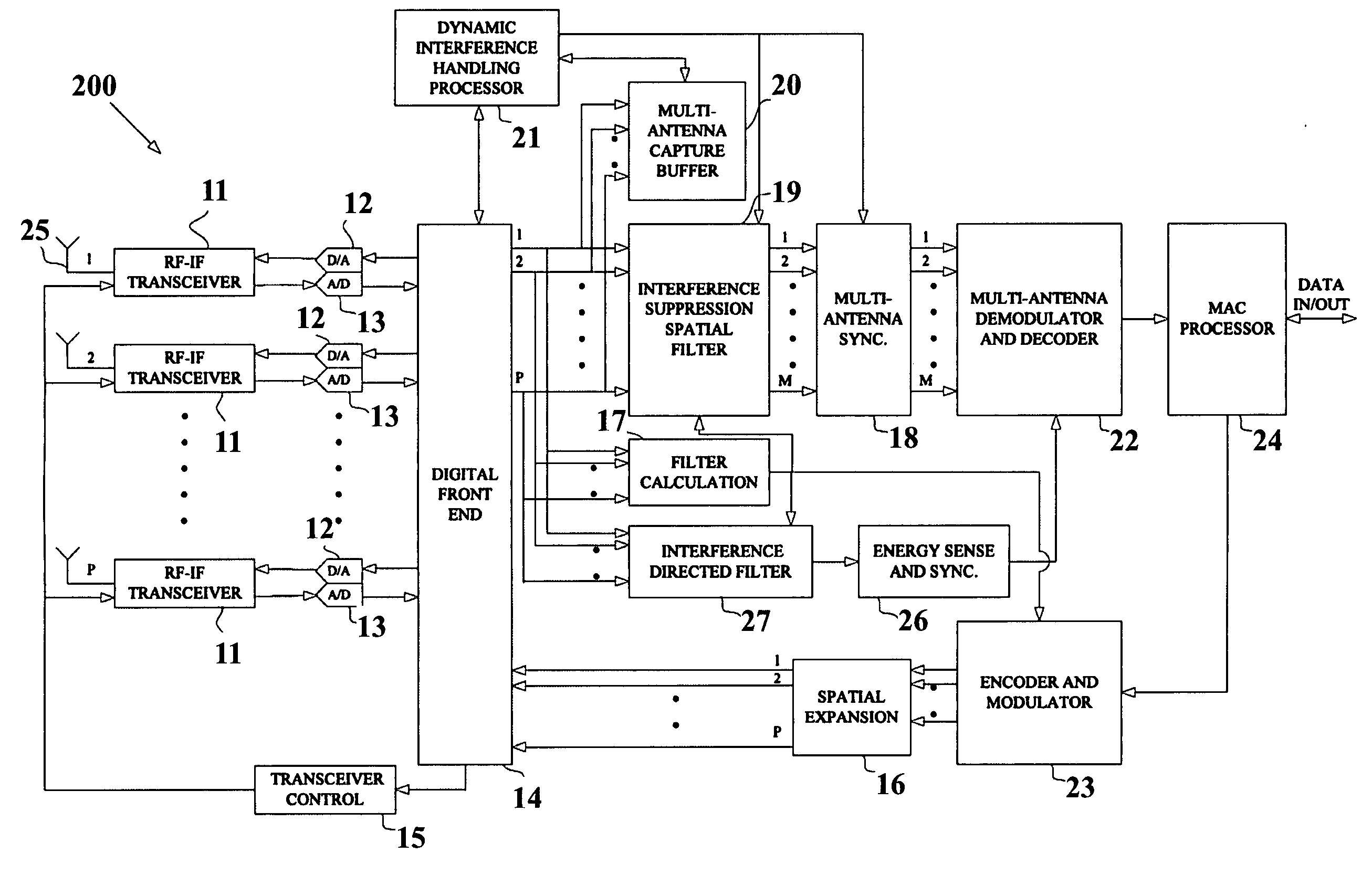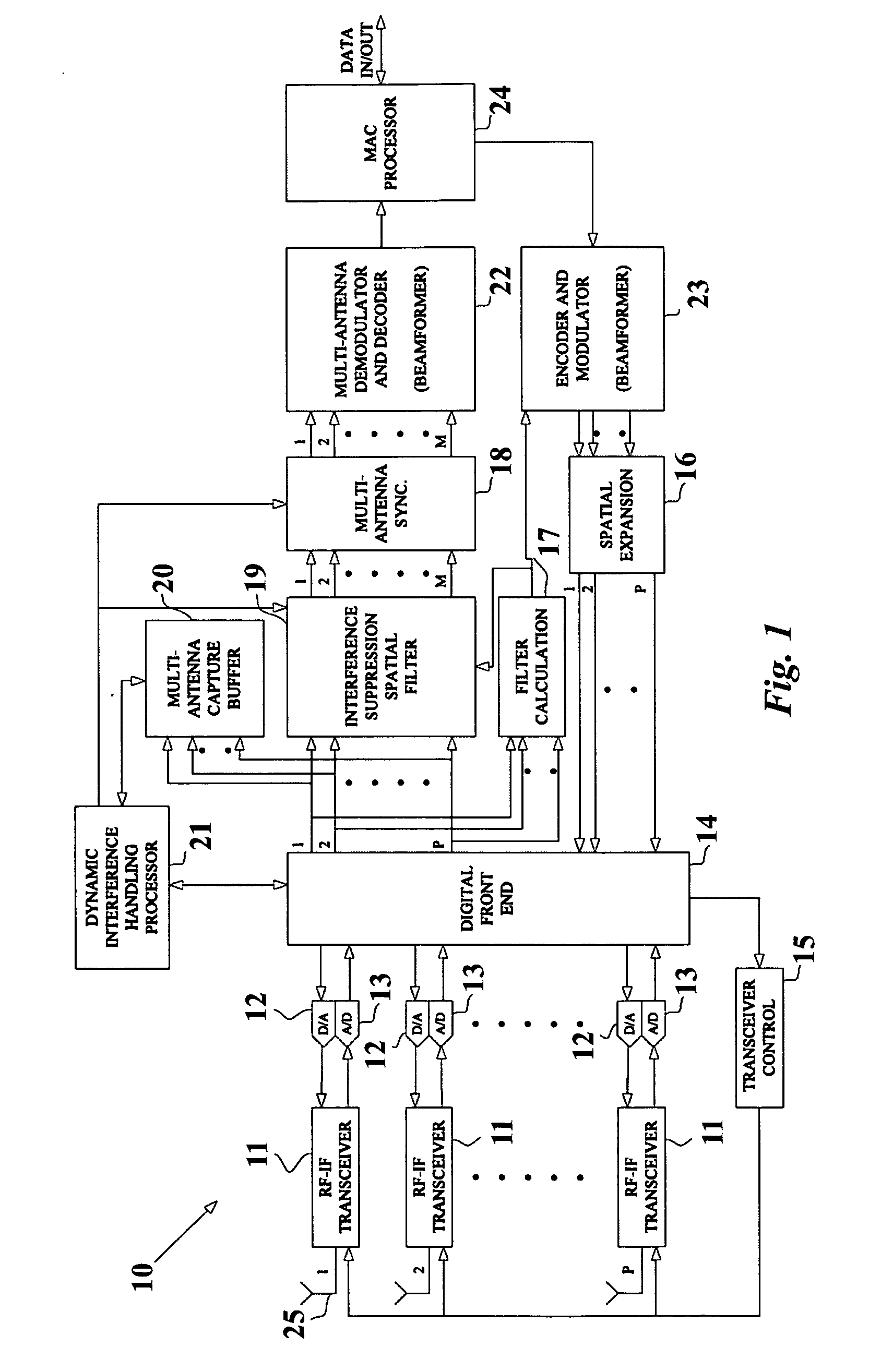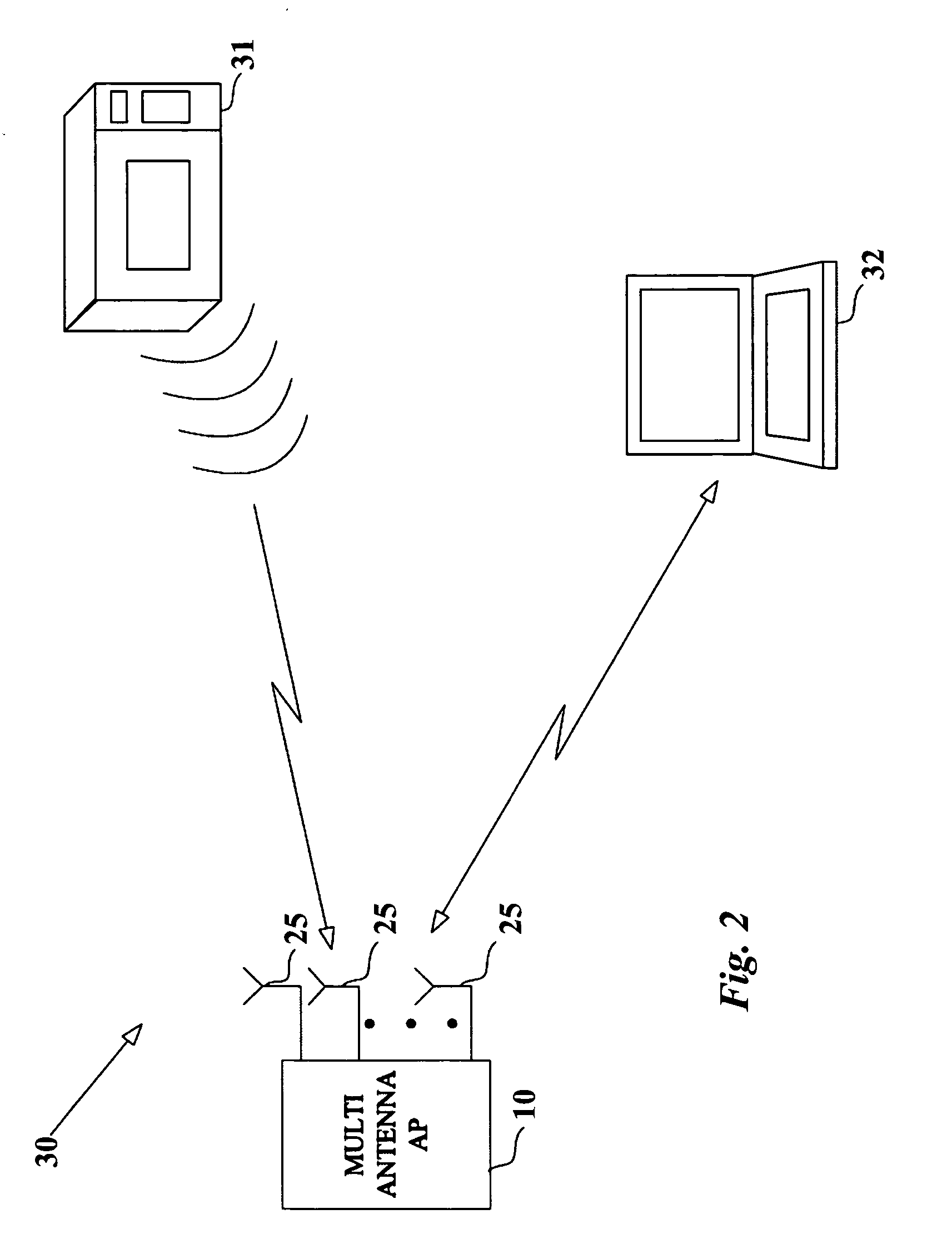Enhancing WLAN performance in the presence of interference
- Summary
- Abstract
- Description
- Claims
- Application Information
AI Technical Summary
Benefits of technology
Problems solved by technology
Method used
Image
Examples
Embodiment Construction
[0023]FIG. 1 presents a block diagram of a wireless LAN (WLAN) access point (AP) 10 capable of coping with interference according to the disclosure of this invention. The WLAN AP includes P antennas 25 and P RF-IF transceivers 11 which operate with a common local oscillator (not shown) and thus enable multi-antenna coherent processing. The RF-IF transceivers 11 are jointly controlled by the transceiver control 15 whose task is to commonly adjust the receive gain and control the Tx / Rx mode switching. On the receive path, the RF-IF transceivers convert the RF signal into a base-band signal and input it to the A / D 13. The A / D 13 converts the analog input into a digital signal, which is input to the digital front-end (FE) 14. On the transmit path, every D / A 12 receives a digital input and converts it to an analog signal, which is input in base-band to the RF-IF transceivers 11 and then output in RF to the P antennas 25.
[0024]The digital FE 14 includes an automatic gain control (AGC) mec...
PUM
 Login to View More
Login to View More Abstract
Description
Claims
Application Information
 Login to View More
Login to View More - R&D
- Intellectual Property
- Life Sciences
- Materials
- Tech Scout
- Unparalleled Data Quality
- Higher Quality Content
- 60% Fewer Hallucinations
Browse by: Latest US Patents, China's latest patents, Technical Efficacy Thesaurus, Application Domain, Technology Topic, Popular Technical Reports.
© 2025 PatSnap. All rights reserved.Legal|Privacy policy|Modern Slavery Act Transparency Statement|Sitemap|About US| Contact US: help@patsnap.com



